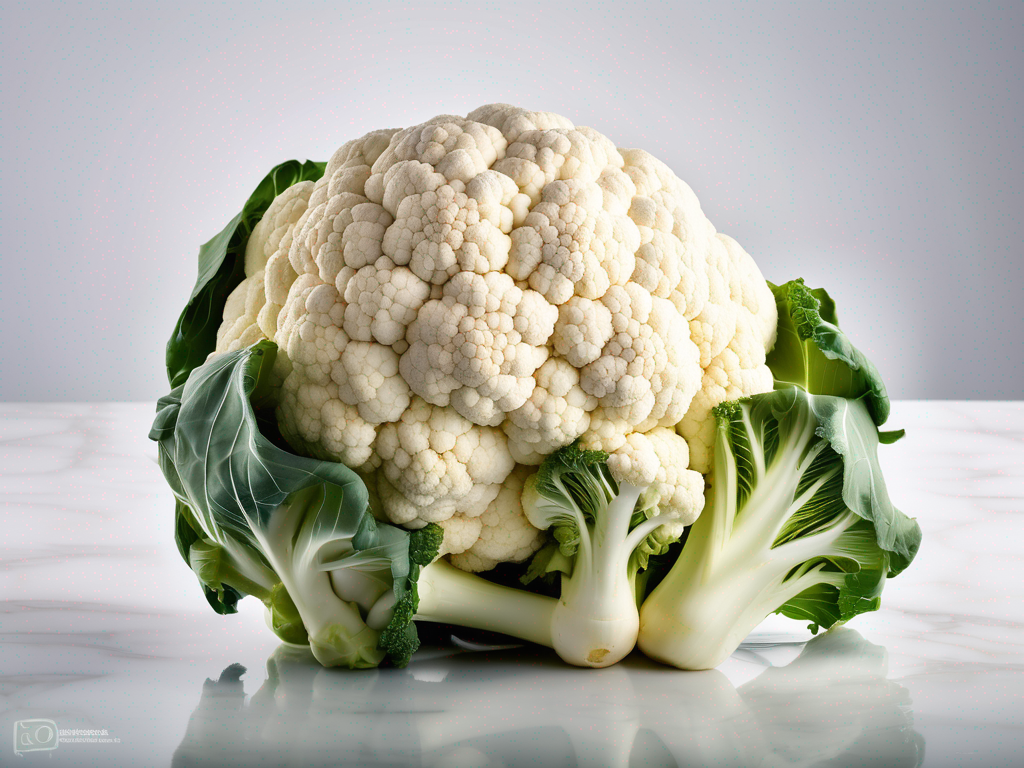
The Ultimate Guide to Storing Cauliflower to Prevent Mold Growth
Get Your Free Food Safety Cheat Sheet
30 most common foods with instant answers. Print it and stick it on your fridge—completely free!
The Ultimate Guide to Storing Cauliflower to Prevent Mold Growth
Cauliflower is a versatile and nutritious vegetable that can be enjoyed in various dishes, from stir-fries to roasted cauliflower steaks. To ensure that your cauliflower stays fresh and mold-free for as long as possible, proper storage is key. Mold growth on cauliflower can not only affect its flavor and texture but also pose health risks if consumed. In this comprehensive guide, we will explore the best practices for storing cauliflower to prevent mold growth. (Cauliflower)
Why Proper Storage Matters for Cauliflower
Cauliflower is a perishable vegetable that is prone to mold growth if not stored correctly. Mold thrives in moist environments, making cauliflower susceptible to spoilage if exposed to excess moisture. Mold not only affects the appearance and taste of cauliflower but can also produce harmful toxins that can cause foodborne illnesses if consumed.
The Importance of Removing Moisture
Excess moisture is the main culprit behind mold growth on cauliflower. When moisture accumulates on the surface of the vegetable, it creates an ideal environment for mold spores to multiply. To prevent mold growth, it is crucial to remove excess moisture before storing cauliflower.
Tips for Removing Moisture from Cauliflower:
- Wash and Dry Thoroughly: Before storing cauliflower, wash it under running water and pat it dry with a clean kitchen towel or paper towels. Ensure that there is no moisture remaining on the surface of the vegetable.
- Air-Dry: Allow the cauliflower to air-dry for a few minutes after washing to ensure that all moisture evaporates.
Ideal Storage Conditions for Cauliflower
Proper storage conditions play a significant role in preventing mold growth on cauliflower. By storing cauliflower in the right environment, you can extend its shelf life and maintain its freshness.
Tips for Ideal Cauliflower Storage:
- Temperature: Cauliflower should be stored in the refrigerator to maintain its freshness. The ideal temperature for storing cauliflower is between 32°F and 40°F (0°C and 4°C).
- Humidity: Cauliflower prefers high humidity levels for storage. To create the right humidity environment, place the cauliflower in a perforated plastic bag or a vegetable crisper drawer in the refrigerator.
- Air Circulation: Proper air circulation is essential to prevent moisture buildup around the cauliflower. Avoid sealing the cauliflower in an airtight container, as it can trap moisture and promote mold growth.
Best Practices for Storing Cauliflower
To ensure that your cauliflower stays fresh and mold-free, follow these best practices for storing cauliflower properly.
Tips for Storing Cauliflower:
- Trim the Leaves: Before storing cauliflower, trim the leaves but keep the stem intact. The leaves can trap moisture and promote mold growth.
- Use a Perforated Bag: Place the cauliflower in a perforated plastic bag or wrap it in a damp paper towel before storing it in the refrigerator. The perforations allow for air circulation while preventing excess moisture buildup.
- Avoid Direct Contact with Water: Cauliflower should not come into direct contact with water during storage, as it can lead to mold growth. Ensure that the cauliflower remains dry throughout the storage period.
- Check for Spoilage: Periodically check the cauliflower for any signs of mold or spoilage. If you notice any dark spots, mold growth, or a foul odor, discard the cauliflower immediately.
Conclusion
Proper storage is essential for maintaining the freshness and quality of cauliflower while preventing mold growth. By following the tips outlined in this guide, you can ensure that your cauliflower stays mold-free and safe for consumption. Remember to remove excess moisture, store cauliflower in the refrigerator with adequate air circulation, and regularly inspect the vegetable for any signs of spoilage. By taking these precautions, you can enjoy delicious and healthy cauliflower dishes without the worry of mold contamination.
For more information on cauliflower and other food safety tips, visit cauliflower. Stay safe and enjoy your fresh cauliflower! (Cauliflower)
Related Posts
Here are some other articles you might find helpful:
- Making the Most of Leftover Cauliflower: Tips for Storage and Usage
- Preserving Cauliflower: Easy Tips for Longer Shelf Life
- The Shelf Life of Frozen Vegetables in Unopened Bags
- How to Tell if Frozen Cauliflower Rice Has Gone Bad Before Cooking It
- The Best Way to Thaw and Reheat Frozen Cauliflower Rice
Authoritative Food Safety References
These agencies and university labs inform every tip and health precaution we publish.
USDA FoodKeeper – Cold Storage Guidelines
Official refrigerator, freezer, and pantry timelines maintained by the U.S. Department of Agriculture.
Visit USDA FoodKeeperFDA Produce Safety Rule & Grower Guidance
Field-to-fridge handling practices that prevent contamination of fruits, vegetables, and leafy greens.
Visit FDA Produce SafetyCDC Foodborne Illness Prevention Hub
Surveillance-backed guidance on pathogens, symptoms, and steps to reduce foodborne illness risk.
Visit CDC Food SafetyUC Davis Postharvest Technology Center
University research detailing optimal storage atmospheres for produce after harvest.
Visit UC Davis PostharvestPenn State Extension – Home Food Preservation & Safety
Peer-reviewed extension bulletins on safe canning, chilling, and reheating practices.
Visit Penn State ExtensionGet Your Free Food Safety Cheat Sheet
30 most common foods with instant answers. Print it and stick it on your fridge—completely free! Want more? Upgrade to the complete guide with 70+ foods.
Scan your food directly and get instant safety info using our AI-powered camera feature.